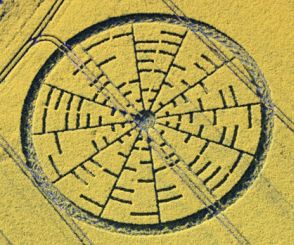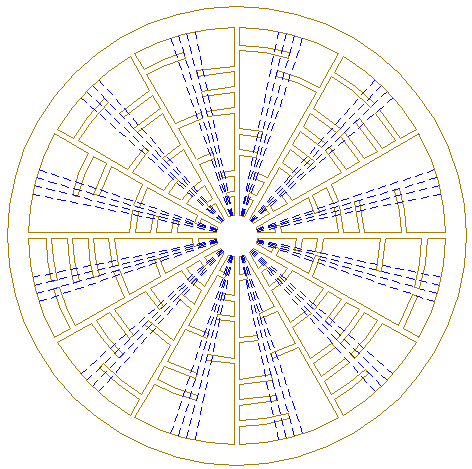Paste/click the link if you don't receive the images.
http://www.treurniet.ca/CropForms/WiltonPic.htm
Be Well.
David
Images decoded from the 2010 Wilton Windmill crop formation
William C. Treurniet, June, 2010
Summary. A crop formation that appeared near Wilton Windmill, Wiltshire, on May 22, 2010, contains ASCII symbols that appear to represent simultaneously several kinds of information. One decoded text string was found to represent an approximation to Euler's identity, and another represented an algorithm for decoding an ASCII symbol sequence to an image format. The instructions were applied to the 2002 Crabwood formation and resulted in an image that can be interpreted as a representation of a bipedal figure extending a three-fingered hand in greeting. In this article, the same algorithm was applied to a new but non-independent data set from the Wilton Windmill formation, and two meaningful images were generated. One appears to show a face with large ears as in a drawing of a bunny in a child's book. The other shows a humanoid body with the head leaning to one side and one arm waving. The common feeling from these images is that they are non-threatening. Perhaps the message they are intended to convey is that we should not fear future encounters with the makers of these formations.
A crop formation appeared near Wilton Windmill, Wiltshire, on May 22, 2010. The design suggested to a number of people that the formation contained sequences of ASCII characters.
 |
| Figure 1. The Wilton Windmill formation. |
 |  |
| Original image | Gaussian blur |
| Figure 2. Image decoded from the Crabwood formation. | |
The search has continued for other ways to to interpret the Wilton Windmill formation. Could it also contain sufficient information to encode an image? An interesting approach was proposed in an article by Zef Damon. His reconstruction of the formation suggests a way to decode 36 bytes of data which would be enough to represent a 9x4 image array. The approach takes advantage of the observation that the arcs projecting from the 12 radii are not all the same length, so that between each pair of dotted lines left in from the reconstruction process there may be a different number of bits of the arcs. Each bit encountered represents a 1 for that bit position, else that position is a 0. This basis for bit assignment is shown in the diagram of Figure 3.
 |
| Figure 3. Zef Damon's reconstruction of the Wilton Windmill formation. |
For the first of the two images found in the formation, each byte was built up of bits assigned going from the center to the outer rim for every pair of adjacent dotted lines. The data file may be seen here. The algorithm then inverted the bits and assigned the resulting byte value to a pixel of the 9x4 grayscale image. The result was the image shown on the left of Figure 4. The image smoothed with a Gaussian blur filter is shown on the right. Perhaps it can be interpreted as a face with large ears as in a drawing of a bunny in a child's book.
 |  |
| Original image | Gaussian blur |
| Figure 4. First image decoded from the Wilton Windmill formation. | |
For the second image, the order of the bits was altered according to a hint from Euler's formula. The formula can be expressed in terms of trigonometric sins and cosines. Accordingly, the bits in the first byte were read from the center to the outside, the second was read from outside to center, the third was read from center to outside, etc. This sinusoidal pattern continued until all 36 bytes were constructed. The data file may be seen here. Again, the algorithm inverted the bits and assigned the byte values to the 9x4 array of image pixels. The result was a picture with more active content shown in Figure 5. The smoothed image is easily interpreted as the body of a humanoid figure with the head leaning to the side and one arm waving.
 |  |
| Original image | Gaussian blur |
| Figure 5. Second image decoded from the Wilton Windmill formation. | |
The decoded images all appear to contain rather trivial content. What we can say, however, is that an image of a proffered handshake, the face of a fuzzy animal, and a friendly wave, have one thing in common. Such images are particularly non-threatening. Perhaps this is the message. If the crop formations are a prelude to an actual meeting with the makers of these formations, these images are telling us to have no fear when this event occurs.





No comments:
Post a Comment